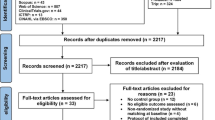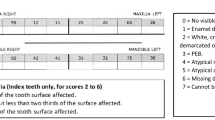Abstract
Purpose of Review
To examine the evidence in support of light continuous forces for enhancing bone adaptation (modeling and remodeling) in orthodontics and dentofacial orthopedics.
Recent Findings
Clinical evidence suggests that light continuous orthodontic force can achieve physiologic expansion of the maxillary arch, but the long-term stability and the biological effects of the procedure are unclear. Compared to conventional orthodontic appliances that deliver heavy interrupted forces for tooth movement, the application of low-magnitude forces in animal models leads to anabolic modeling and remodeling of the alveolar bone in the path of orthodontic tooth movement. This results in dental translation and expansion of the alveolar process.
Summary
Light continuous forces are preferable to heavy forces for more physiologic dentofacial orthopedics. The interaction of low-magnitude loads with soft tissue posture achieves therapeutic adaptation of the craniofacial skeleton. The increasing emphasis on genomic medicine and personalized treatment planning should focus on low-magnitude loads in orthodontics and dentofacial orthopedics.



Similar content being viewed by others
References
Papers of particular interest, published recently, have been highlighted as: • Of importance ••Of major importance
McCormack SW, Witzel U, Watson PJ, Fagan MJ, Groning F. The biomechanical function of periodontal ligament fibres in orthodontic tooth movement. PLoS One. 2014;9(7):e102387. https://doi.org/10.1371/journal.pone.0102387.
Roberts WE, Huja SS. Bone Physiology, Metabolism, and Biomechanics in Orthodontic Practice. In: Graber LW, Vanarsdall RL, KWL V, Huang GJ, editors. Orthodontics: Current Principles and Techniques, 6e. Amsterdam: Elsevier Health Sciences; 2016. p. 99–153.
Wise GE, King GJ. Mechanisms of tooth eruption and orthodontic tooth movement. J Dent Res. 2008;87(5):414–34. https://doi.org/10.1177/154405910808700509.
Melsen B. Tissue reaction and biomechanics. Front Oral Biol. 2016;18:36–45. https://doi.org/10.1159/000351898.
Huang H, Williams RC, Kyrkanides S. Accelerated orthodontic tooth movement: molecular mechanisms. Am J Orthod Dentofac Orthop. 2014;146(5):620–32. https://doi.org/10.1016/j.ajodo.2014.07.007.
Jiang C, Li Z, Quan H, Xiao L, Zhao J, Jiang C, et al. Osteoimmunology in orthodontic tooth movement. Oral Dis. 2015;21(6):694–704. https://doi.org/10.1111/odi.12273.
Moin S, Kalajzic Z, Utreja A, Nihara J, Wadhwa S, Uribe F, et al. Osteocyte death during orthodontic tooth movement in mice. Angle Orthod. 2014;84(6):1086–92. https://doi.org/10.2319/110713-813.1.
Thilander B, Hatch N, Sun Z. The Biologic Basis of Orthodontics. In: Graber LW, Vanarsdall RL, KWL V, Huang GJ, editors. Orthodontics: Current Principles and Techniques, 6e. Amsterdam: Elsevier Health Sciences; 2016. p. 51–98.
Krishnan V, Davidovitch Z. Cellular, molecular, and tissue-level reactions to orthodontic force. Am J Orthod Dentofac Orthop. 2006;129(4):469 e1–32. https://doi.org/10.1016/j.ajodo.2005.10.007.
Masella RS, Meister M. Current concepts in the biology of orthodontic tooth movement. Am J Orthod Dentofac Orthop. 2006;129(4):458–68. https://doi.org/10.1016/j.ajodo.2005.12.013.
Narimiya T, Wada S, Kanzaki H, Ishikawa M, Tsuge A, Yamaguchi Y, et al. Orthodontic tensile strain induces angiogenesis via type IV collagen degradation by matrix metalloproteinase-12. J Periodontal Res. 2017;52(5):842–52. https://doi.org/10.1111/jre.12453.
Tsuge A, Noda K, Nakamura Y. Early tissue reaction in the tension zone of PDL during orthodontic tooth movement. Arch Oral Biol. 2016;65:17–25. https://doi.org/10.1016/j.archoralbio.2016.01.007.
Roerink ME, van der Schaaf ME, Dinarello CA, Knoop H, van der Meer JW. Interleukin-1 as a mediator of fatigue in disease: a narrative review. J Neuroinflammation. 2017;14(1):16. https://doi.org/10.1186/s12974-017-0796-7.
Long P, Hu J, Piesco N, Buckley M, Agarwal S. Low magnitude of tensile strain inhibits IL-1beta-dependent induction of pro-inflammatory cytokines and induces synthesis of IL-10 in human periodontal ligament cells in vitro. J Dent Res. 2001;80(5):1416–20. https://doi.org/10.1177/00220345010800050601.
Long P, Liu F, Piesco NP, Kapur R, Agarwal S. Signaling by mechanical strain involves transcriptional regulation of proinflammatory genes in human periodontal ligament cells in vitro. Bone. 2002;30(4):547–52.
Viecilli RF, Kar-Kuri MH, Varriale J, Budiman A, Janal M. Effects of initial stresses and time on orthodontic external root resorption. J Dent Res. 2013;92(4):346–51. https://doi.org/10.1177/0022034513480794.
Roberts WE, Viecilli RF, Chang C, Katona TR, Paydar NH. Biology of biomechanics: finite element analysis of a statically determinate system to rotate the occlusal plane for correction of a skeletal Class III open-bite malocclusion. Am J Orthod Dentofac Orthop. 2015;148(6):943–55. https://doi.org/10.1016/j.ajodo.2015.10.002.
Krishnan V, Davidovitch Z. On a path to unfolding the biological mechanisms of orthodontic tooth movement. J Dent Res. 2009;88(7):597–608. https://doi.org/10.1177/0022034509338914.
Frost HM. A 2003 update of bone physiology and Wolff’s law for clinicians. Angle Orthod. 2004;74(1):3–15. https://doi.org/10.1043/0003-3219(2004)074<0003:AUOBPA>2.0.CO;2.
Akkaya S, Lorenzon S, Ucem TT. Comparison of dental arch and arch perimeter changes between bonded rapid and slow maxillary expansion procedures. Eur J Orthod. 1998;20(3):255–61.
Tyrovola JB. The “Mechanostat theory” of frost and the OPG/RANKL/RANK system. J Cell Biochem. 2015;116(12):2724–9. https://doi.org/10.1002/jcb.25265.
Yee JA, Turk T, Elekdag-Turk S, Cheng LL, Darendeliler MA. Rate of tooth movement under heavy and light continuous orthodontic forces. Am J Orthod Dentofac Orthop. 2009;136(2):150 e1–9; discussion -1. https://doi.org/10.1016/j.ajodo.2009.03.026.
Quinn RS, Yoshikawa DK. A reassessment of force magnitude in orthodontics. Am J Orthod. 1985;88(3):252–60.
Ren Y, Maltha JC, Kuijpers-Jagtman AM. Optimum force magnitude for orthodontic tooth movement: a systematic literature review. Angle Orthod. 2003;73(1):86–92. https://doi.org/10.1043/0003-3219(2003)073<0086:OFMFOT>2.0.CO;2.
Iwasaki LR, Haack JE, Nickel JC, Morton J. Human tooth movement in response to continuous stress of low magnitude. Am J Orthod Dentofac Orthop. 2000;117(2):175–83.
Antoun JS, Mei L, Gibbs K, Farella M. Effect of orthodontic treatment on the periodontal tissues. Periodontol. 2017;74(1):140–57. https://doi.org/10.1111/prd.12194.
Saffar JL, Lasfargues JJ, Cherruau M. Alveolar bone and the alveolar process: the socket that is never stable. Periodontol. 1997;13:76–90.
Edwards CB, Marshall SD, Qian F, Southard KA, Franciscus RG, Southard TE. Longitudinal study of facial skeletal growth completion in 3 dimensions. Am J Orthod Dentofac Orthop. 2007;132(6):762–8. https://doi.org/10.1016/j.ajodo.2006.01.038.
McNamara JA. Maxillary transverse deficiency. Am J Orthod Dentofac Orthop. 2000;117(5):567–70.
Betts NJ, Vanarsdall RL, Barber HD, Higgins-Barber K, Fonseca RJ. Diagnosis and treatment of transverse maxillary deficiency. Int J Adult Orthodon Orthognath Surg. 1995;10(2):75–96.
McNamara JA Jr. Long-term adaptations to changes in the transverse dimension in children and adolescents: an overview. Am J Orthod Dentofac Orthop. 2006;129(4 Suppl):S71–4. https://doi.org/10.1016/j.ajodo.2005.09.020.
Cross DL, McDonald JP. Effect of rapid maxillary expansion on skeletal, dental, and nasal structures: a postero-anterior cephalometric study. Eur J Orthod. 2000;22(5):519–28.
Iseri H, Ozsoy S. Semirapid maxillary expansion—a study of long-term transverse effects in older adolescents and adults. Angle Orthod. 2004;74(1):71–8. https://doi.org/10.1043/0003-3219(2004)074<0071:SMESOL>2.0.CO;2.
Lagravere MO, Major PW, Flores-Mir C. Long-term skeletal changes with rapid maxillary expansion: a systematic review. Angle Orthod. 2005;75(6):1046–52. https://doi.org/10.1043/0003-3219(2005)75[1046:LSCWRM]2.0.CO;2.
Arat FE, Arat ZM, Tompson B, Tanju S. Muscular and condylar response to rapid maxillary expansion. Part 3: magnetic resonance assessment of condyle-disc relationship. Am J Orthod Dentofac Orthop. 2008;133(6):830–6. https://doi.org/10.1016/j.ajodo.2007.03.026.
Baysal A, Karadede I, Hekimoglu S, Ucar F, Ozer T, Veli I, et al. Evaluation of root resorption following rapid maxillary expansion using cone-beam computed tomography. Angle Orthod. 2012;82(3):488–94. https://doi.org/10.2319/060411-367.1.
Damon DH. The rationale, evolution and clinical application of the self-ligating bracket. Clin Orthod Res. 1998;1(1):52–61.
LaBlonde B, Vich ML, Edwards P, Kula K, Ghoneima A. Three dimensional evaluation of alveolar bone changes in response to different rapid palatal expansion activation rates. Dental Press J Orthod. 2017;22(1):89–97. https://doi.org/10.1590/2177-6709.22.1.089-097.oar.
Gould MS, Picton DC. A study of pressures exerted by the lips and cheeks on the teeth of subjects with normal occlusion. Arch Oral Biol. 1964;9:469–78.
Proffit WR. Equilibrium theory revisited: factors influencing position of the teeth. Angle Orthod. 1978;48(3):175–86. https://doi.org/10.1043/0003-3219(1978)048<0175:ETRFIP>2.0.CO;2.
Weinstein S. Minimal forces in tooth movement. Am J Orthod. 1967;53(12):881–903.
Ruan WH, Chen MD, Gu ZY, Lu Y, Su JM, Guo Q. Muscular forces exerted on the normal deciduous dentition. Angle Orthod. 2005;75(5):785–90. https://doi.org/10.1043/0003-3219(2005)75[785:MFEOTN]2.0.CO;2.
Ruan WH, Su JM, Ye XW. Pressure from the lips and the tongue in children with class III malocclusion. J Zhejiang Univ Sci B. 2007;8(5):296–301. https://doi.org/10.1631/jzus.2007.B0296.
• Kraus CD, Campbell PM, Spears R, Taylor RW, Buschang PH. Bony adaptation after expansion with light-to-moderate continuous forces. Am J Orthod Dentofac Orthop. 2014;145(5):655–66. https://doi.org/10.1016/j.ajodo.2014.01.017. This study shows bone formation on the periosteal surfaces of cortical bone following expansion with a ligh-to-moderate continuous orthodonitc force.
•• Utreja A, Bain C, Turek B, Holland R, AlRasheed R, Roberts WE. Maxillary expansion in an animal model with light, continuous force. Angle Orthod. 2018; https://doi.org/10.2319/070717-451.1. The authors demonstrate sutural expansion as well as buccal bone modeling and remodeling remodleing using a light, continuous orthodontic force for maxillary expansion.
Author information
Authors and Affiliations
Corresponding author
Ethics declarations
Conflict of Interest
Achint Utreja declares that he has no conflict of interest.
Human and Animal Rights and Informed Consent
This article does not contain any studies with human or animal subjects performed by any of the authors.
Additional information
This article is part of the Topical Collection on Craniofacial Skeleton
Rights and permissions
About this article
Cite this article
Utreja, A. Low-Magnitude Forces for Bone Modeling and Remodeling in Dentofacial Orthopedics. Curr Osteoporos Rep 16, 277–282 (2018). https://doi.org/10.1007/s11914-018-0437-9
Published:
Issue Date:
DOI: https://doi.org/10.1007/s11914-018-0437-9




